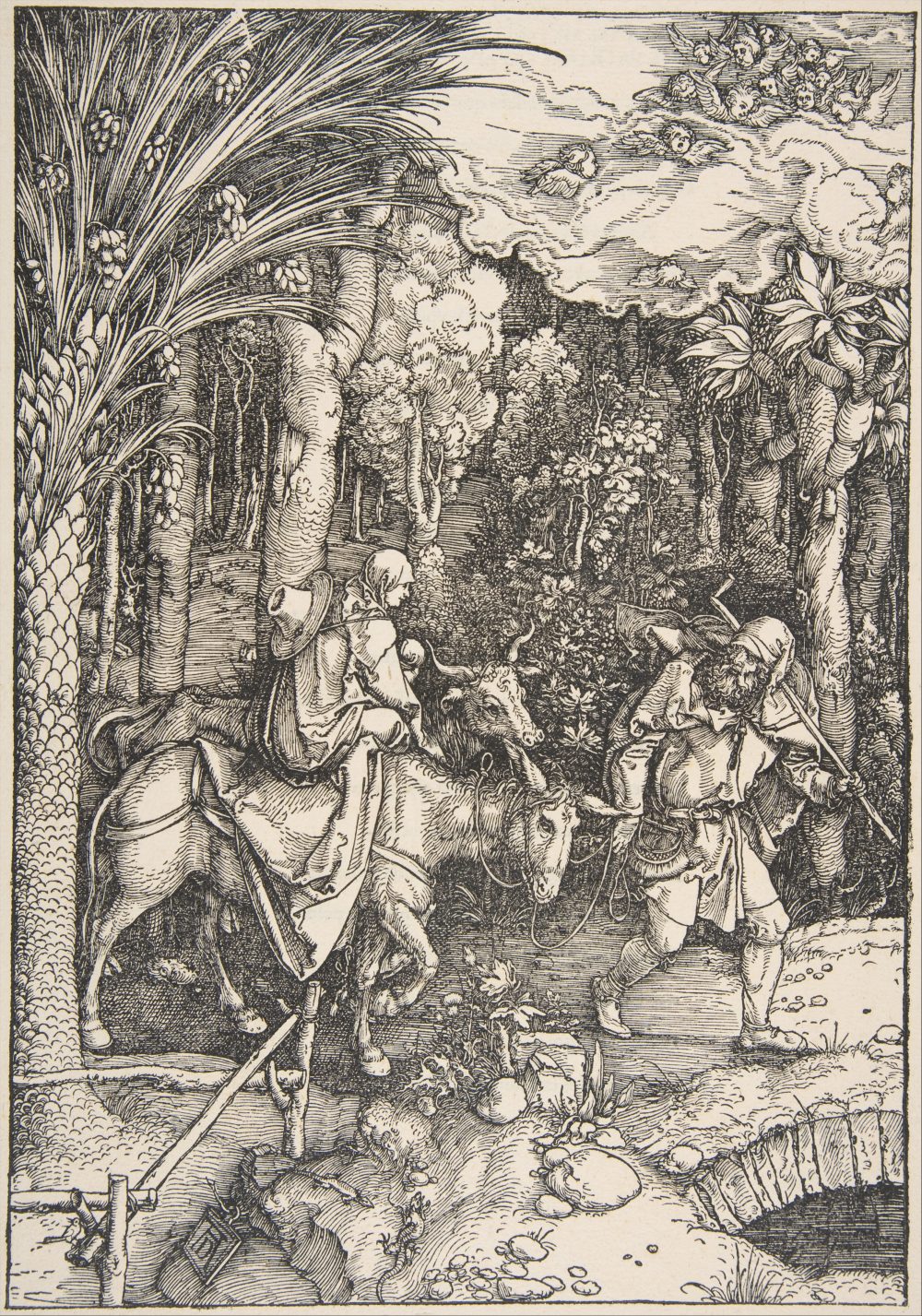
The Metropolitan Museum of Art, New York
Pacheco when analysing the scenes about the flight into Egypt and the return from there, observes that the artists did not pay attention to some elements concerning these two different moments, mainly concerning the passage of time and the different ages of Christ as a child in such scenes. When flying to Egipt, the child must be wrapped. When it’s seen painted the Virgin Mary with an older Child (approximately with an age of seven years old), it is the return from Egypt. In this second case, it would be possible, states the author, to depict Christ walking on foot or sitting on the donkey in front of the Virgin Mary.
“The painting of this flight will be like this: Our Lady sitting on her little donkey, with her blue mantle, pink clothes and a hat on her head and a palm hat; the Child wrapped, in his arms, that reveals something of the face, San Joseph in front, skirts in ribbon, with his staff, carrying the donkey right-handed, and an angel flying ahead showing them the way; although Peregrin put it, in the Escorial cloister, walking on a cloud. It is also possible to paint without an angel, as Albert did in his woodblock prints; and if anyone wants, they can paint this story at night, by moonlight, as I have seen it, to comply with the rigor of that first day, although it will be more difficult and, thus, I consider it safer and more pleasant, to paint it during the day, to excuse the crudeness of the lights and shadows. […] When we see painted the Virgin Our Lady with the big Child in her hand and her husband with his little hand, or resting in the field, as the Baroque painted it, we must understand that it is the return from Egypt after the age of seven years because, being the Child of that age, at times he would walk on foot, at times sitting on the donkey in front of the Blessed Virgin as I put it, and with the halter, or reins, in his hand and his Mother with her palm hat in her hand, and with both hands with her little hand, at times seated on the donkey in front of the Blessed Virgin as I put it and with the halter, or reins, in his hand and his Mother with her palm hat on, holding him with both hands and St. Joseph in front, with great care and vigilance, guiding them along the best way”; and on such a long journey, as Gracián considered, he would also at times carry the holy Child with him by the hand, or in his arms”.
“La pintura desta huida será asi: Nuestra Señora sentada en su asnita, con su manto azul, ropa rosada y toca en su cabeza y sombrero de palma puesto; el Niño envuelto, en sus brazos, que descubra algo del rostro, San Josef delante, haldas en cinta, con su báculo, llevando de diestro la jumenta, y un ángel volando delante enseñándoles el camino; aunque Peregrin lo puso, en el claustro del Escorial, caminando sobre una nube. También se puede pintar sin ángel, como hizo Alberto en sus estampas de madera; y si quisiere alguno, podrá pintar esta historia de noche, a las luces de la luna, como yo lo he visto, por cumplir con el rigor de aquella primera jornada, aunque será más dificultoso y, asi, tengo por más seguro y más agradable, pintarla de dia, por escusar la crudeza de las luces y sombras. […]Cuando vemos pintada a la Virgen Nuestra Señora con el Niño grandecito de la mano y a su esposo con la manita, o descansando en el campo, como lo pintó el Barocio, habemos de entender que es la vuelta de Egipto después de los siete años porque, siendo el Niño de aquella edad, a ratos andaria a pie, a ratos sentado en la asnita delante de la Santísima Virgen como yo lo puse y con el cabestro, o riendas, en la mano y su Madre con su sombrero de palma tocado, que con ambas manos lo va sosteniendo y San Josef delante, con gran cuidado y vigilancia, encaminándolos por el mejor camino”; y en viaje tan largo, como consideró Gracián, también llevaria a ratos, el santo Niño consigo de la mano, o en sus brazos”.
Pacheco 1990, 625, n.101; Pacheco 1990, 627, n.106-107



